Finding qualified research participants that are willing to take part in studies is no easy task, especially when your target audience is very busy, hard to reach, and slow to respond. Reaching specific types of decision-makers and influencers can be very difficult and time-consuming. And, in many instances, there is pressure to obtain rapid feedback to inform important business decisions and strategies. This is where a custom panel can be very useful to enable “on-demand” insights and serve as an ongoing asset that business teams can utilize as new research needs arise.
Custom panels provide important benefits of immediate access to the right audiences, better engagement, and higher quality feedback. Having a commitment from panelists to participate in research activities significantly reduces research timelines. Responsiveness and engagement are also much higher with custom panels as there is more of a community feel and members have a common affinity towards the topics (or an affinity with a brand if the panel is sponsored). Cost savings also come into play with a pre-recruited base that can be utilized over multiple projects and/or phases of a single project (e.g., different phases of developing an ad campaign or developing a product).
There is also flexibility to employ a variety of qualitative and quantitative approaches that can include lengthier activities:
- Longer surveys
- In-depth interviewing
- Focus groups
- Ethnography
- Projects that require a longitudinal view (to measure key metrics such as awareness, and how they have changed over time)
…as well as smaller-scale activities:
- “Micro surveys”; A/B testing
- Brainstorming sessions/open-ended insight development
- Pop-up Online Bulletin Board Groups
- Pre-testing of materials and planning before a large-scale qualitative or quantitative research project
When building and maintaining a successful custom panel there are many things to consider. The most important, first step is to define and outline what you want to accomplish with the panel, including the business needs that will ultimately shape and drive panel outcomes. There are also several design considerations and best practices that should be part of the up-front planning:
- Consider the length of time that you will need the panel – are your needs more isolated or will you have ongoing research projects for 6 months to one year?
- Who do you want in your panel? Developing criteria for who qualifies as well as obtaining details about their role, focus areas, knowledge, etc. will be vital in determining what types of studies you can invite panel members to in the future.
- Recruitment may require some creativity and multiple sources and approaches depending on your target audience.
- A panel can’t survive without engagement, so it is important to have a long term plan that includes regular contacts with research activities, engaging through results summaries, reaching out about upcoming projects, and sharing information and updates when necessary. Panelists are liable to become disengaged if too much time passes between activities and communications. We also recommend compensation that is commensurate with research activities. Depending on your objectives, branding a panel can also support engagement, especially if panelists have a relationship with the sponsoring brand. These panelists are often more candid in their responses because they know that the information they provide will be put to use.
- How you keep track of a panel is also critical to maintaining its health. KS&R utilizes different tools to track panel participation rates and profile data. There will be natural attrition with any panel, so it is important to understand when to refresh members to maintain adequate sample sizes for activities. It also important to monitor for oversampling to avoid exhaustion from too many research activities.
- We have found that including personalization elements (signatures, help desk support) and “a face” to coordinate your panel goes a long way to helping with participation rates and providing a better experience.
By following the steps above, KS&R has been able to manage a number of custom panels that support agile research programs for pharma/life sciences, technology, and professional services sectors. If you are determining whether a panel is right for your organization, think about your research activities in the last year. Could you have learned anything by looking at responses longitudinally? Was there a need to accelerate insights delivery? What research initiatives would have been possible due to shortened recruitment time? If you had any of these requirements, then consider what a panel can do to accelerate your research deliverables!
“The most meaningful benefit is time savings – the ability, once set up, to shorten the traditional research timeline and questionnaire length without compromising sample or result quality. This allows not only frequent pulsing but quick response for the business questions of the moment.”
- Pharma client


